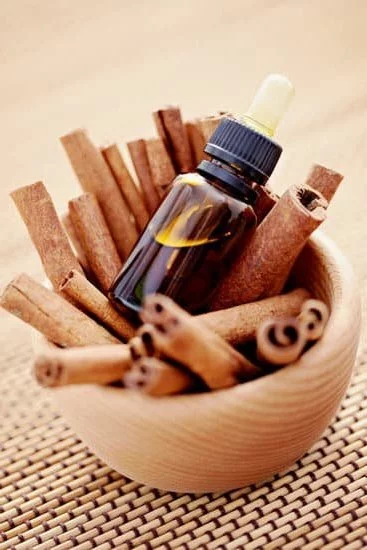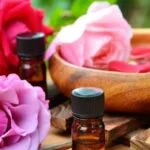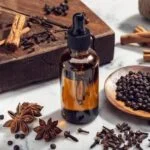Aromatherapy massage is a holistic treatment that combines the therapeutic benefits of massage therapy with the natural healing properties of essential oils. This ancient practice has been used for centuries to promote overall well-being and relaxation. In this article, we will explore the science behind how aromatherapy massage works, the different types of essential oils used, and the techniques employed in this form of alternative medicine.
Aromatherapy massage is rooted in the belief that specific scents can have a profound impact on the body and mind. By incorporating essential oils into a massage session, individuals can experience physical, emotional, and mental benefits. The combination of touch and scent creates a deeply relaxing experience that promotes stress relief and enhances overall health.
Throughout history, various cultures have utilized aromatherapy massage for its therapeutic effects. From ancient Egypt to traditional Chinese medicine, aromatic plants and their oils have been revered for their healing properties. Today, aromatherapy massage continues to be a popular form of alternative medicine, offering a natural approach to health and wellness. Stay tuned as we delve into the fascinating world of aromatherapy massage and uncover the secrets behind its efficacy in promoting holistic well-being.
Understanding Aromatherapy Oils
Types of Essential Oils
Aromatherapy massage oils are derived from a variety of plant sources, each with its own unique properties and benefits. Lavender, known for its calming and soothing effects, is often used to promote relaxation and alleviate stress. Peppermint is commonly used for its invigorating and refreshing qualities, making it ideal for relieving headaches and muscle tension. Eucalyptus oil is popular for its respiratory benefits, as it can help clear the sinuses and ease breathing.
Properties and Benefits of Popular Essential Oils
Lavender essential oil is known for its anti-inflammatory, antidepressant, and analgesic properties. It can help reduce anxiety, improve sleep quality, and alleviate headaches. Peppermint essential oil has anti-inflammatory, antispasmodic, and pain-relieving properties. It is often used to relieve muscle pain, headaches, indigestion, and nausea. Eucalyptus essential oil has antibacterial, antiviral, and decongestant properties. It can help relieve respiratory conditions such as colds, coughs, and sinusitis.
How Aromatherapy Oils Work in Massage
When essential oils are applied during a massage therapy session, they are absorbed through the skin and inhaled through the nose. This allows the active compounds in the oils to enter the bloodstream and have an impact on various bodily systems.
The scent receptors in the nose communicate with the brain’s limbic system, which plays a role in emotions, behaviors, sense of smell, long-term memory retention – which helps explain how aromatherapy works to yield psychological responses to smell. The massage itself also helps enhance the absorption of essential oils into the body by improving circulation and relaxing muscles.
By understanding different types of essential oils used in aromatherapy massage along with their specific properties and benefits – one gets a better idea of how aromatherapy massage works on a physiological level.
It’s important to note that while aromatherapy may offer numerous health benefits when combined with massage therapy to achieve added relaxation results; anyone considering this should consult with their doctor before using any kind of alternative medicine because some individuals should not use this form of therapy due to allergies or other medical reasons.
The Science Behind Aromatherapy
Aromatherapy massage is a holistic healing treatment that combines the benefits of aromatherapy with those of massage therapy. Aromatherapy, which involves the use of essential oils extracted from plants to promote physical and emotional well-being, has been practiced for centuries. When these essential oils are used in combination with massage techniques, the results can be even more potent.
The essential oils used in aromatherapy contain various chemical compounds that can have a direct impact on the body and mind. These compounds have been found to interact with the olfactory system in the nose and the limbic system in the brain, which are responsible for controlling emotions, memories, and arousal. This is how aromatherapy works on a physiological level, influencing both the mind and body through scent.
Studies have shown that certain essential oils can help reduce anxiety, improve sleep quality, and alleviate symptoms of depression. For example, lavender oil has been found to have sedative properties, while peppermint oil may help with mental clarity and eucalyptus oil can aid in respiratory issues. When these oils are applied during a massage, their effects can be enhanced due to increased absorption through the skin and inhalation through the respiratory system.
The combination of aromatherapy with massage not only allows for better absorption of essential oils into the body but also helps to enhance their effects by promoting relaxation, reducing stress and tension, and improving circulation. The skilled hands-on techniques used in massage therapy work synergistically with the therapeutic properties of essential oils to provide an overall sense of well-being for the recipient.
The Role of Massage in Aromatherapy
Aromatherapy massage is a holistic treatment that combines the use of essential oils with massage therapy to promote relaxation, relieve stress, and improve overall well-being. One of the key components of aromatherapy massage is the actual massage techniques used to apply the essential oils to the body.
The combination of touch and aroma creates a sensory experience that can have profound effects on both the body and mind. The specific massage techniques used in aromatherapy play a crucial role in enhancing the therapeutic benefits of the essential oils.
Massage techniques such as Swedish massage, deep tissue massage, and lymphatic drainage are commonly used in aromatherapy to promote relaxation and alleviate muscular tension. Through gentle manipulation or deeper pressure, these techniques help to increase circulation, reduce inflammation, and release toxins from the body.
When combined with carefully selected essential oils, the massage can further aid in addressing specific issues such as insomnia, anxiety, or muscle pain. This synergy between touch and scent is fundamental to how aromatherapy massage works in providing both physical and emotional relief.
The application of essential oils during a massage also helps to facilitate their absorption into the bloodstream and transport them throughout the body. As a result, their therapeutic properties can have a more profound effect on various physiological processes such as hormonal balance, immune function, and pain perception.
The act of massaging the oils into the skin also stimulates nerve endings and promotes relaxation by soothing overactive nerves. Understanding how aromatherapy works on a physiological level highlights how an effective combination of specific massage techniques allows for optimal absorption and utilization of essential oils within an individual’s body and mind.
| Aromatherapy Massage Techniques | Benefits |
|---|---|
| Swedish Massage | Promotes relaxation and stress relief |
| Deep Tissue Massage | Alleviates muscular tension and chronic pain |
| Lymphatic Drainage | Reduces inflammation and aids detoxification |
Benefits of Aromatherapy Massage
Physical Benefits
Aromatherapy massage offers numerous physical benefits for the body. The combination of essential oils and massage techniques can help to relieve muscle tension, reduce inflammation, improve circulation, and promote overall relaxation. When the essential oils are absorbed through the skin and inhaled during the massage, they can have analgesic and anti-inflammatory effects, making it an effective option for those suffering from chronic pain or other physical ailments.
Emotional Benefits
The emotional benefits of aromatherapy massage are significant as well. Certain essential oils have mood-boosting properties that can help reduce anxiety, depression, and stress. For example, lavender oil is known for its calming effect on the nervous system, while citrus oils such as bergamot can uplift the mood. When combined with the therapeutic touch of massage, these oils can create a deeply relaxing experience that promotes emotional well-being.
Mental Benefits
In addition to physical and emotional benefits, aromatherapy massage also provides mental benefits. The scent of essential oils has a direct impact on the limbic system in the brain, which controls emotions and memories. This can result in improved cognitive function, better focus, and a clearer state of mind. By enhancing mental clarity and reducing mental fatigue, aromatherapy massage can leave individuals feeling rejuvenated and refreshed after a session.
By understanding how aromatherapy massage works to produce these diverse benefits-physical, emotional, and mental-individuals can make an informed decision to incorporate this holistic approach into their wellness routine. It is clear that the combination of aromatherapy oils with specialized massage techniques creates a powerful synergy that not only pampers the senses but also provides healing support for overall well-being.
Aromatherapy Massage Techniques
Aromatherapy massage combines the benefits of traditional massage therapy with the therapeutic properties of essential oils. The techniques used in aromatherapy massage are designed to promote relaxation, relieve tension, and enhance overall well-being. Here are some common techniques used in aromatherapy massage:
1. Effleurage: This technique involves long, sweeping strokes that glide over the skin using light to moderate pressure. Effleurage helps to warm up the muscles and prepare the body for deeper massage techniques.
2. Petrissage: Petrissage consists of kneading, rolling, and wringing movements that work on a deeper level to release muscle tension and improve circulation. This technique is especially effective for targeting specific areas of discomfort.
3. Friction: Friction involves using firm pressure and circular movements to generate heat in the body’s tissues. This technique helps to break down muscle adhesions and alleviate pain.
4. Tapotement: Also known as percussion, tapotement uses rhythmic tapping or pounding motions to invigorate the muscles and stimulate blood flow. Tapotement can boost energy levels and promote a sense of revitalization.
5. Trigger point therapy: Aromatherapy massage therapists may also incorporate trigger point therapy to address specific areas of muscular pain or tightness. By applying targeted pressure to these trigger points, therapists can help release tension and restore muscle function.
A skilled aromatherapist will tailor these techniques to each individual’s needs and preferences, ensuring a personalized and effective treatment experience. Combining these massage techniques with carefully selected essential oils creates a holistic approach to healing and relaxation.
Ultimately, aromatherapy massage techniques aim to provide both physical relief from muscle tension and emotional support through relaxation and stress reduction. The combination of touch therapy with the aromatic benefits of essential oils creates a unique therapeutic experience that promotes overall wellness.
Preparing for an Aromatherapy Massage
When preparing for an aromatherapy massage, it’s important to create a relaxing and soothing atmosphere that will enhance the overall experience. Here are some tips on how to prepare for an aromatherapy massage:
1. Choose the Right Essential Oils: Before your massage, take some time to choose the essential oils that best suit your needs and preferences. Whether you’re looking for relaxation, rejuvenation, or relief from specific ailments, there are various essential oils to choose from. Some popular options include lavender for relaxation, peppermint for energy and mental clarity, and eucalyptus for respiratory support.
2. Set the Mood: Creating a calming environment is key to fully enjoying the benefits of aromatherapy massage. Consider using soft lighting, calming music, and soothing scents to promote relaxation and stress relief. You can also use a diffuser to fill the room with your chosen essential oil’s aroma prior to the massage.
3. Communicate with Your Aromatherapist: Before your session begins, communicate with your aromatherapist about any preferences or concerns you may have regarding the massage. This includes discussing any allergies or sensitivities to certain scents, as well as specifying areas of tension or discomfort in your body that may need focused attention during the massage.
By following these simple steps and preparing accordingly before your aromatherapy massage, you can maximize the benefits of this holistic practice and truly enjoy a deeply relaxing experience that addresses both physical and emotional well-being.
Finding a Qualified Aromatherapist
When seeking an aromatherapy massage, it is essential to find a qualified and reputable aromatherapist or massage therapist who specializes in this particular practice. Aromatherapy massage requires a deep understanding of essential oils, their properties, and how they interact with the body during a massage. It is crucial to find someone who has proper training and certification in aromatherapy massage to ensure a safe and effective experience.
One way to find a qualified aromatherapist is by asking for recommendations from friends, family, or healthcare providers. Getting referrals from people you trust can help you find someone who has a good reputation and can provide high-quality aromatherapy massage. Additionally, you can search online for certified aromatherapists in your area or look for professional organizations that specialize in alternative medicine and holistic therapies.
When researching potential aromatherapists, be sure to inquire about their training and credentials. A reputable practitioner should have completed formal training in aromatherapy and be able to provide evidence of their certification. It is also important to ask about their experience with aromatherapy massage and any additional qualifications they may have, such as membership in professional associations related to alternative medicine or holistic therapies.
Finding the right aromatherapist is essential to ensuring a safe and beneficial aromatherapy massage experience. By taking the time to research and select a qualified professional, you can feel confident that you will receive expert care tailored to your individual needs. Whether you are seeking relief from physical ailments or simply looking to relax and rejuvenate, working with a skilled aromatherapist can enhance the effects of essential oils and contribute to your overall well-being.
Conclusion
In conclusion, aromatherapy massage is a holistic approach to health and wellness that combines the benefits of essential oils with the healing touch of massage therapy. Through the use of specific essential oils such as lavender, peppermint, and eucalyptus, aromatherapy massage works by stimulating the senses and promoting relaxation in both the body and mind. The science behind aromatherapy explains how scents impact the brain and nervous system, leading to various physical, emotional, and mental benefits.
The role of massage in aromatherapy is crucial as it helps to enhance the effects of essential oils on the body through various techniques such as Swedish and deep tissue massage. This combination results in a deeply therapeutic experience that caters to each individual’s specific needs and preferences. Before undergoing an aromatherapy massage, it is important to properly prepare by choosing the right essential oils and creating a calming atmosphere to fully reap the benefits.
To fully experience the benefits of aromatherapy massage for themselves, it is important for readers to seek out a qualified aromatherapist or massage therapist specializing in this technique. Finding a professional with proper training and certification ensures a safe and effective experience. Overall, aromatherapy massage offers a unique way to improve one’s overall well-being through the power of scent and touch.
Frequently Asked Questions
How Does Aromatherapy Work in the Body?
Aromatherapy works in the body by stimulating the olfactory system, which then sends signals to the limbic system in the brain. This can have various effects on mood, stress levels, and even physical symptoms.
What Is the Mechanism of Action of Aromatherapy Massage?
The mechanism of action of aromatherapy massage involves the combined effects of touch therapy and inhaling essential oils. The massage itself helps relax muscles and improve circulation, while the aroma from the oils can enhance relaxation and reduce stress.
What Is the Difference Between a Normal Massage and an Aromatherapy Massage?
The main difference between a normal massage and an aromatherapy massage lies in the use of essential oils. While a normal massage focuses solely on manipulating muscles and soft tissues, an aromatherapy massage incorporates the inhalation or topical application of essential oils to enhance the therapeutic effects. This can provide additional benefits for both physical and emotional well-being.

Are you looking for a natural way to improve your health and wellbeing?
If so, aromatherapy may be the answer for you.






